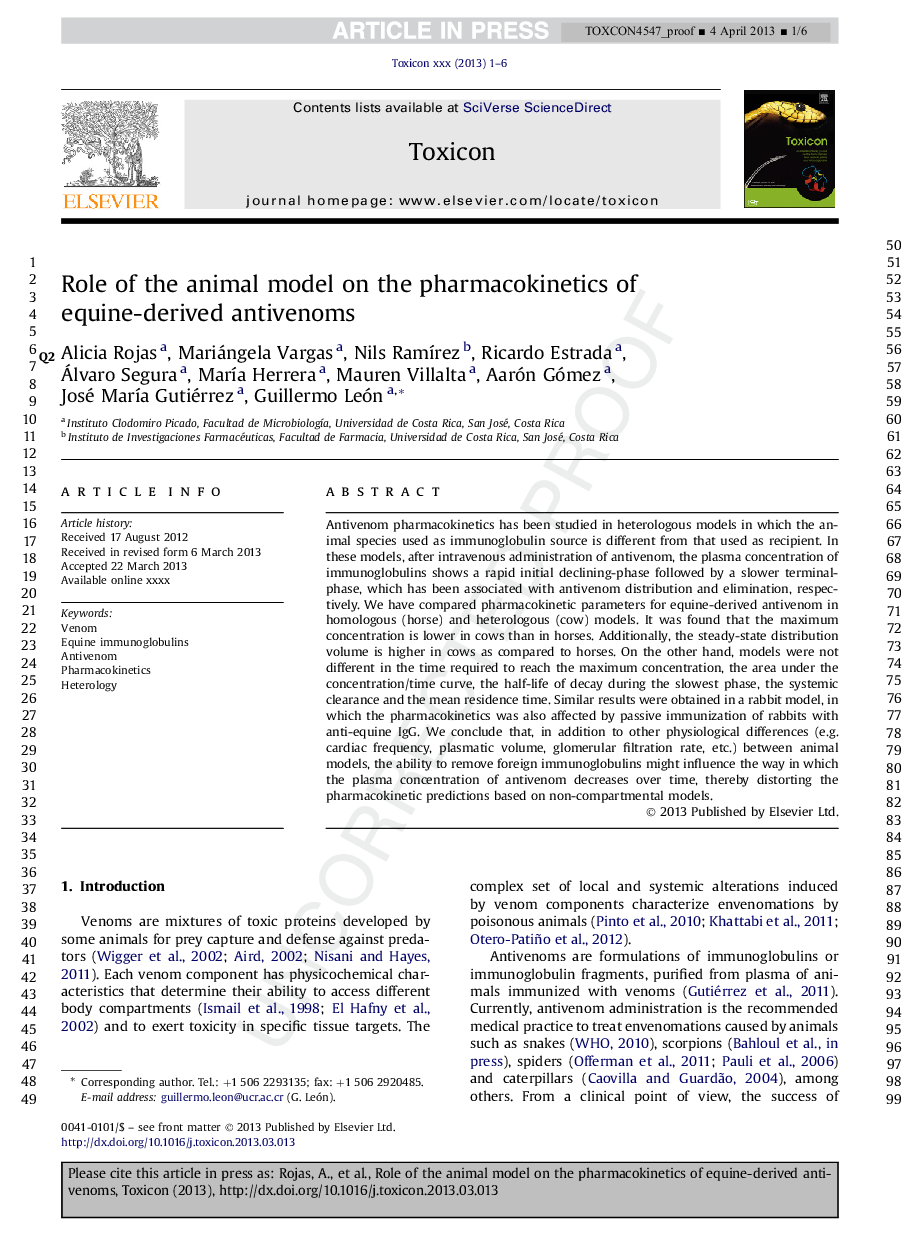| Article ID | Journal | Published Year | Pages | File Type |
|---|---|---|---|---|
| 8397590 | Toxicon | 2013 | 6 Pages |
Abstract
Antivenom pharmacokinetics has been studied in heterologous models in which the animal species used as immunoglobulin source is different from that used as recipient. In these models, after intravenous administration of antivenom, the plasma concentration of immunoglobulins shows a rapid initial declining-phase followed by a slower terminal-phase, which has been associated with antivenom distribution and elimination, respectively. We have compared pharmacokinetic parameters for equine-derived antivenom in homologous (horse) and heterologous (cow) models. It was found that the maximum concentration is lower in cows than in horses. Additionally, the steady-state distribution volume is higher in cows as compared to horses. On the other hand, models were not different in the time required to reach the maximum concentration, the area under the concentration/time curve, the half-life of decay during the slowest phase, the systemic clearance and the mean residence time. Similar results were obtained in a rabbit model, in which the pharmacokinetics was also affected by passive immunization of rabbits with anti-equine IgG. We conclude that, in addition to other physiological differences (e.g. cardiac frequency, plasmatic volume, glomerular filtration rate, etc.) between animal models, the ability to remove foreign immunoglobulins might influence the way in which the plasma concentration of antivenom decreases over time, thereby distorting the pharmacokinetic predictions based on non-compartmental models.
Related Topics
Life Sciences
Biochemistry, Genetics and Molecular Biology
Biochemistry, Genetics and Molecular Biology (General)
Authors
Alicia Rojas, Mariángela Vargas, Nils RamÃrez, Ricardo Estrada, Álvaro Segura, MarÃa Herrera, Mauren Villalta, Aarón Gómez, José MarÃa Gutiérrez, Guillermo León,
